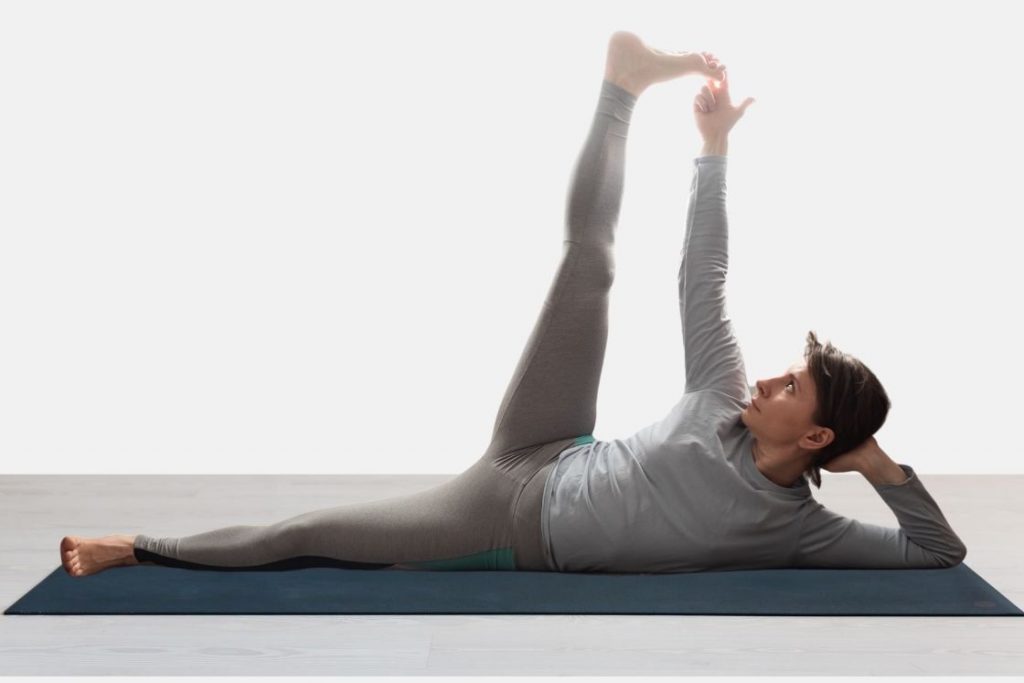
Anantasana is a balancing and relaxing category pose. In this pose, the body is reclined to one side while in laying down position. It gives a smooth stretch to the whole torso and leg muscles.
Indeed, in a deeper state of Anantasana, doer experience the joy of relaxing position with enhanced awareness required to balance the posture.
Practicing Anantasana would be a totally exhilarating experience for the new practitioners, as it is packed up with amazing health benefits along with its diversified approach.
Meaning & Interpretation
Ananta represents something that is boundless, endless; one who has never created but there exists and will be, no matter what.
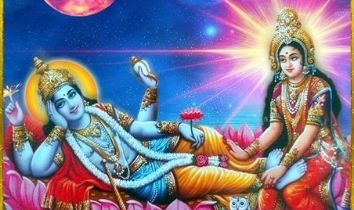
In yoga, the timeless Ananta when combines with asana it gives birth to Anantasana, a yogic pose that represents Lord Vishnu’s reclined position. Therefore, also known as Sleeping Vishnu Pose or Vishnu’s Couch Pose.
In Hindu mythology, Ananta is the Shesha naga (one who remains or infinite), a thousand-headed celestial snake. It is said that shesha naga holds all the whole universe together and also serves as the Vishnu’s couch when he rests between his incarnated avatars.
According to one of the legend, In the ancient period, people prayed lord Vishnu for help to cure their sufferings. In response to the prayers, Vishnu told Adhishesha while resting on him; to incarnate a human form on earth and serve mankind.
So, Adhishesha in human form (Patanjali) fell from heaven in the hands of a praying woman, who became his mother. In the name Patanjali, ‘Pata‘ means ‘fell‘ and ‘jali‘ means ‘snakes hooded Anjali mudra‘.
Practice Guide of Ananatasana
Following steps can be considered for appropriate practice of this asana.
Precautions & Contraindications
- People with the condition of spondylitis, cervical, slip disc should do it carefully.
- It would be unsuitable to perform this asana in a condition of backbone like scoliosis; practice only under the guidance.
- Practitioners with a Sciatic pain and shoulder injury should refrain from doing this asana until recovered.
Preparatory Poses
- Gate Pose (Parighasana)
- Extended Triangle Pose (Utthita Trikonasana)
- Reclining Big Toe Pose (Supta Padangushthasana)
Ananatasana Steps
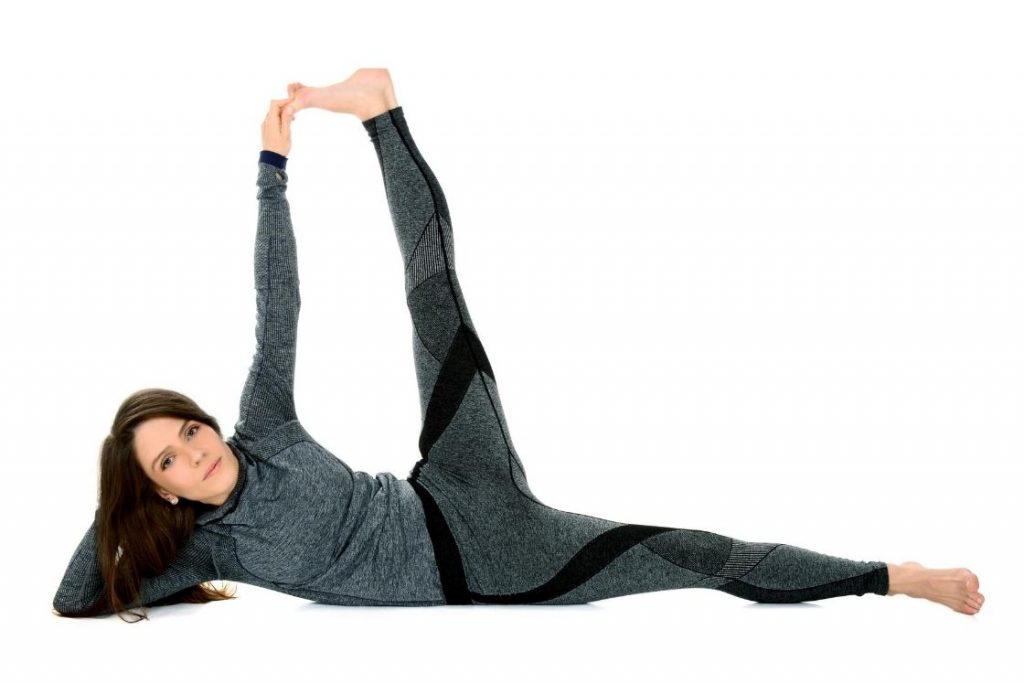
- Begin by lying on the right side with the left foot over the right in a symmetrical manner. Press your right heel, flex your ankle, and maintain balance using your foot.
- Now, stretch your right arm out parallel to your torso in order to create a line from fingertips to heel. Slide the right arm outward while stretching the armpit and place it on the floor.
- Raise your torso and then head to rest the right side of your head in the right palm. The forearm and upper arm of the right hand in a verticle position.
- Rotate left leg in a way that it points upside. Then bend the knees, draw it to the torso and grab the big toe of the left leg by first two fingers and thumb through between the leg.
- Now, inhale and raise the leg with an angle slightly forward. By adjusting sacrum against pelvis acts as the fulcrum to balance the raised leg in a reclined position.
- This is the final position, hold here.
Release
While pressing both the heels remain in the posture for 30 to 60 seconds. One can also raise the time period to ace the asana.
Unlock the grip and slowly release the leg using core muscles, while the right foot balances the posture.
Keep the left hand on the side of the thigh and remove elbow back in the vicinity to the side of the right torso. Exhale and relax.
Beginners Tips
- In the case of the starter, one should be cautious while resting head in the palms, use your torso as well, to avoid any pressure on the neck.
- Beginners should not overstrain to go beyond the limit in terms of leg stretching, do according to your ability.
Props and Modification
- Practitioners might find it difficult to hold the reclines position initially. So, they can use a bolster or a wedge to support the back in the posture.
- If you are having an uneasiness in reaching the toes or while stretching a leg; then one can use a strap to wrap around the ankle and can hold it to lessen the difficulty.
Follow Up Poses
- Downward-facing Dog Pose (Adho Mukha Svanasana)
Ananatasana Variations
By introducing some modifications in the Anantasana one practice variation of this asana.
- Variation 1
If you conquered this pose with skill and want to challenge yourself with more advancements; then you can bend your left knee and draw it to touch the left ear while balancing the pose.
- Variation 2
This can be done to get comfortable with this pose as if you are finding it as a tough one. Instead of raising your torso, you can rest your head inside of the right arm after bending it.
Ananatasana Benefits
- Ananatasana stretches and strengthens the muscles of the side of the torso. Enhances the movability of Scapula and shoulder joint.
- Regular practice makes the hamstrings, calves supple and flexible that improve movements.
- It also stretches the abdominal muscles and builds core which further assists in various balancing asanas. However, it also aids in digestion.
- The horizontal position of Ananatasana improves circulation; this induces tranquility and relaxation in mind while overcoming stress and tension.
- The involvement of Sacrum while balancing in reclining position stimulates the sacral chakra; this encourages the sense of desire, pleasure, and creativity in the practitioners.
- Holding for a longer duration helps in reducing the weight from the hips and waist. Hence, makes one healthy and happy.
- The reclining position brings the heart and lungs to work in a coordinated manner and improves cardiorespiratory health in CAD (Coronary artery disease).
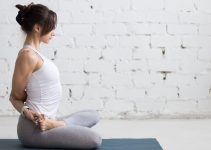
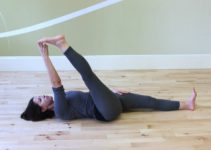
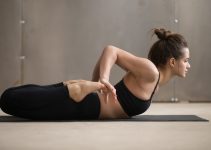


Hello sir you have explained very well. I usually referred your articles to my family members. Keep writing. Thank you sir. ?